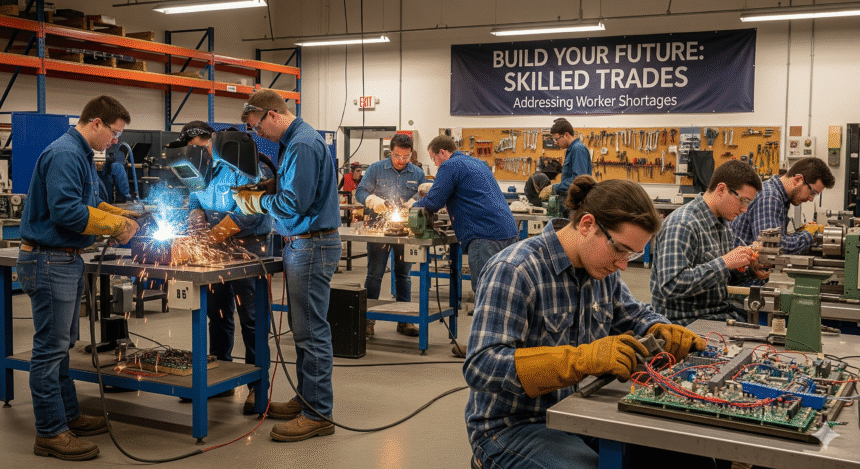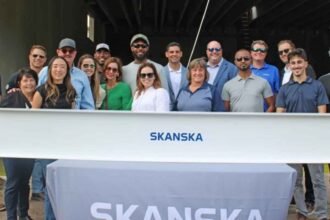The construction and maintenance sectors are in crisis. Infrastructure and housing demand are surging, yet there aren’t enough skilled hands to match. Training programs are expanding, but is it enough?
The Growing Gap Between Demand and Skilled Labor
Heat is on. The Bureau of Labor Statistics forecasts that HVACR (heating, ventilation, air conditioning, and refrigeration) mechanics and installers will grow by 8%, delivering roughly 40,100 job openings annually through 2034. Electricians aren’t far behind, with a 9% rise and about 81,000 annual openings projected over the same period. Plumbers, pipefitters, steamfitters, and general maintenance and repair roles are expected to rise by 4%. These aren’t steady-state numbers; they reflect climbing rates of retirement, churn, and ever-growing infrastructure needs.
On top of this, the Business Roundtable, led by the heads of Carrier and Lowe’s, launched a major initiative this summer to grow training across multiple demand-heavy sectors, manufacturing, construction, building maintenance, repair, and energy. Lowe’s alone has poured $43 million into grants for community and technical colleges to train students in carpentry, HVAC, electrical, plumbing, and general maintenance.
Corporate Moves, Grants, Pilots, and Youth Outreach
Beyond education-focused funding, Home Depot’s Foundation kicked off a $10 million initiative that includes a $1 million partnership with the Boys & Girls Clubs of America. This “Path to Pro” pilot in Atlanta, Phoenix, and Houston brings teens face-to-face with carpentry, plumbing, HVAC, and electrical careers, and even supports veterans heading into trades programs.
Why Training Programs Matter More Than Ever
Labor shortages aren’t new, but they’ve become acute. A majority of surveyed workers express satisfaction with their roles, yet recruitment stalls continue. Nearly 90% of skilled tradespeople report being “somewhat” or “very satisfied” on the job, but young workers aren’t stepping in fast enough. Meanwhile, aging workforce trends, slow retraining, and outdated perceptions are dragging everything down.
The challenge isn’t just printing money. Without enough trainees, infrastructure funds gather dust, projects stall, and costs spiral out of control.
Partnering Across Industries
When big competitors like Lowe’s and Carrier join forces, they can actually hit scale. Virtual reality, augmented reality, and other tech tools are giving learners immersive prep experiences that traditional programs struggle to provide.
Boosting Outreach and Brand Recognition
The “trades aren’t glamorous” stereotype is fading, but it still holds back interested students. Social media, however, is doing work. TikTok-style videos by real trade school students and early career pros, showing the day-to-day, pay details, and satisfaction, are sparking renewed interest in welding, electrical, and construction fields.
Pushing Policy and Public Funding
States like Maryland, New York, and Ohio are rolling out workforce grants and prioritizing contractors with training and apprenticeship programs. Federal policymakers are pushing reforms to remove barriers, boost labor supply, and fund skills development.
Standardized Accreditation and Career Pathways
National organizations like the National Center for Construction Education and Research bring consistency, accrediting programs, assessments, certifications, and career development paths across more than 40 trades. It’s not flashy, but it’s essential.
Rebranding the Trades for Gen Z
Gen Z craves authenticity, flexibility, and meaning. Modern recruitment strategies push real stories, highlight satisfaction, career growth, and economic stability, especially via platforms like TikTok. On top of that, modernizing training with VR and immersive tools is a smart, Gen Z energy move.
What’s Next, and Why It Matters
This isn’t just about building homes or fixing pipes. This is about national infrastructure, economic security, and energy resilience. Projects sit idle when there aren’t licensed pros to get them done. Training pipelines need reinforcements now, not tomorrow.
These cross-sector investments, grants for education and outreach, tech-driven training, and new narratives driving cultural shifts they’re not optional anymore. They’re mission-critical.
If the industry gets this right, young people find promising, hands-on careers, communities get built, infrastructure gets funded, and we all get infrastructure that doesn’t crumble before it even starts.









